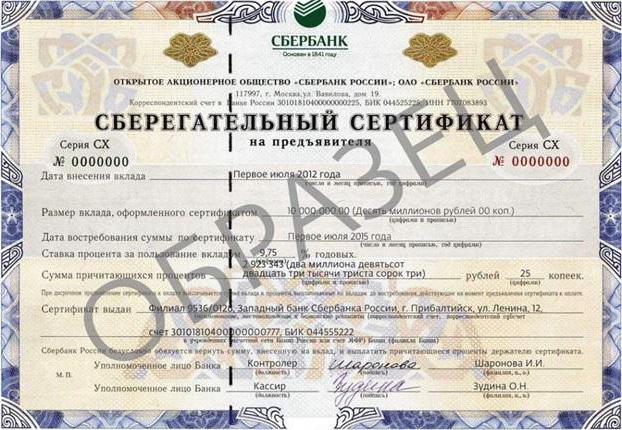The Federal Law “On the Securities Market” regulates the subject of regulation, which allows you to directly determine the concept itself, as well as the existing types of markets in which securities are circulated. What is a documentary security will be described in detail in this article.
Market - a type of relationship that occurs during the issue, as well as the circulation of various kinds of securities. It also implies directly the activities of participants in the relevant professional field.
Market classification
Securities markets are classified by:
- At the level of organization (there are organized markets and not organized markets).
- By location of trade (distinguish between exchange and OTC securities markets).
- Given the time of issue (represented by the primary and secondary securities markets).
- By geographical feature (distinguish securities markets of local, regional, national and international type).
- By type of transactions (there are cash and derivatives markets).
It also seems possible to classify securities markets according to the main types of their issuers, or investors, and directly by the type of instruments themselves. The very definition, as well as a description of existing types of securities, is fixed by law and is displayed in Chapter 7 of the Civil Code of the Russian Federation. So what is a documentary security? More on this later.
Types of Securities
The Civil Code of the Russian Federation establishes two basic, which are basic, concepts:
- Documentary securities. They are documents drawn up in full compliance with legislative requirements. This type of securities certifies a certain kind of obligation or other rights that can be realized by presenting these securities. What are the types of documentary securities? Consider this below.
- Securities are uncertificated. Obligatory and other rights, which are fixed by the decision on the issue, or by another document of the person who issued them. Moreover, the issue, sale, transfer of ownership of them is possible to implement only in accordance with the established norms of the law.
We will understand what common features these two concepts have, as well as what is the difference between them.
We formulate a brief concept that characterizes the essence of securities.
The essence of any type of security is that it secures a certain list of rights of its owner. (This may be the right to any property or, for example, the right to participate in the activities of the enterprise and others).
Thus, you can notice the main difference. The rights in the first case are fixed in the document itself, if it is a security of a documentary type, or in a decision on an issue, if it is a security of a paperless type.
Types of uncertificated securities
The main types of non-documentary securities include:
- Stocks.
- Bonds.
- Issuer options.
- Russian depositary receipts.
Types of Documentary Securities
The main types of documentary securities include:
- Bearer security.
- Security type order.
- Registered security.
Let us consider in more detail documentary securities, their types, main features.
Documentary Security
As we have already found out, documentary-type securities are documents executed on paper and certifying certain property rights. Must have a strictly observed form and a number of mandatory details.The transfer of rights enshrined in a documentary type security is possible only with the direct presentation of the original security.
Classical documentary securities are divided into:
- bills;
- various checks;
- certificates, deposit, as well as savings;
- bank books;
- bills of lading.
Equity securities, such as bonds, as well as shares, are issued in both forms, both documentary and non-documentary. So, a documentary security certifies rights. If the equity security has a documentary form, then the holder of the right receives a document that is duly executed and which indicates the consolidation of the right. It is referred to as a security certificate. In the event that the issue paper is presented in a non-documentary form, the right of the owner is established by an entry in the system in which the register reflecting data on securities is maintained.
Features
It should be noted that one copy of a security of a documentary form can be certified only by a single certificate, but one certificate can certify one, several, and all securities that have the same state registration number.
A documentary-type security can be stored directly with its owner, then the ownership right secured in it will pass along with the transfer of the paper itself. It can also be stored in the depository, and in this case, all rights to it are transferred to the new owner when transfers are made to the depository on the custody account.
The property rights that are enclosed in the documentary document security, as well as the scope of these rights, are contained in the certificate, or in the decision on its issue. In the event that discrepancies between the text of the decision on the issue and the certificate are discovered, the holder of the issue paper has the full right to demand the exercise of the rights secured by it in the amount that the certificate implies.
The organization that carried out the issue must complete the execution of the documentary security in full and in favor of the person who presents the certificate. If the security is in custody at the depository, then the obligations must be fulfilled with respect to the person who the issuer will indicate to the issuer.
A documentary type security was the only type of security until the middle of the last century. However, with the development of information and accounting technologies, the issue of paperless securities became relevant. Fixing their release is carried out by maintaining entries in the registry, or in depositories.
In the event that a security of a documentary form is issued subject to mandatory centralized storage, the depositary must be indicated in the certificate.
Let us consider in more detail some types of documentary-type securities.
Bill of lading
Documentary security is a bill of lading.
Bill of lading - a document confirming the fact of shipment by the shipper by sea. As a rule, it is used when the ship is general, that is, it carries out the simultaneous transportation of goods belonging to different shippers. Each of these shippers receives a bill of lading. Extradition is usually carried out by the master of the vessel on behalf of either the owner of the vessel or on behalf of the charterer.
The main functions of the bill of lading are:
- It fixes that the cargo has been accepted.
- Contains information listing the terms of the contract for the carriage of goods.
- Fixing the ownership of the goods.

The bill of lading must indicate:
- Full and reliable name of the vessel. It is indicated if the cargo is transported by a specific vessel.
- Names of the carrier and the sender of the cargo, as well as the place where the cargo was accepted for transportation.
- Destination of cargo, as well as the name of the consignee. In accordance with the type of consignee, bills of lading are distinguished, order, registered and for the sender.
- Full cargo information. Its name, available markings, quality condition, properties inherent in it, as well as appearance.
- The number of pieces of cargo, its weight and volume.
- Freight data, as well as other payments due to the carrier.
- The number of copies in which the bill of lading is drawn up.
- Signature of the representative of the carrier, or the master of the vessel.
Types of Bill of Lading
As mentioned above, there are 3 types of bills of lading:
- Registered security, which involves specifying the name of the specific consignee.
- An order security (documentary) implies an indication that the goods must be issued by order of the consignee or its consignor.
- Bearer. As the name implies, the delivery of goods should be made to the one who presents the bill of lading.
A bill of lading can be clean if the carrier has not made a single comment on the quantitative and qualitative characteristics of the cargo. Dirty is a bill of lading in which reservations on the characteristics of the cargo take place. This distinguishes securities in documentary form.
Also, a bill of lading can be charter or linear. The linear bill of lading contains detailed information on the terms of the contract for the implementation of sea freight, which is carried out according to a strictly predetermined schedule and between two specific ports. The bill of lading of the linear type regulates the mutual relations of the carrier, both with the recipient and with the sender of the goods. The charter bill of lading is used if tramp transportation is carried out. That is, transportation outside the schedule and off the line. The bill of lading that was issued to the sender is a receipt that the goods were accepted on board. Actually, the bill of lading itself acts in this case as the document of title. There must be a strict compliance between the terms of the charter and the bill of lading.
Savings Bank Book
It is too documentary security.
Savings Bank Book - a document confirming the fact that an individual deposited money into a savings account opened in accordance with an agreement concluded between an individual and a bank.
A savings bank book must contain data such as:
- Full name of the bank.
- Address of the bank.
- Details of the account that was assigned in accordance with the agreement on the deposit of a private person.
- Amounts of funds that have been credited or have been written off.
- The total amount of the account balance at the moment when the book is presented.
Information on the deposit, which is indicated in the savings book, is the basis for deposit operations between the bank and the owner of the book.
All operations on a savings book, such as interest payments, or full withdrawal of a deposit, are carried out by the bank only upon provision of the book. This is how documentary securities work. We consider the features of the nominal of this type in more detail.
Registered and bearer books
Savings books are of two types - registered or bearer.
A registered savings bank book is a document, the issue of deposits and payment of interest on which is carried out only upon presentation by the person indicated in such book. An important rule is that a nominal type of savings book does not allow the transfer of deposit rights to another person. If there is a loss or damage to a personal savings book, then, at the request of its holder, the bank either issues a new personal book or pays the deposit and the interest due on it. We have described registered documentary securities. What's next?
In the event that the bank book belongs to the type of bearer books, then all the rights to the deposit, as well as interest on the deposit, are controlled by the person who presents the book. Bearer savings book upon the fact is a security. In accordance with this, if it is lost or damaged, the restoration procedure is carried out in accordance with the rules established for securities.
It is important to note that at present most financial enterprises do not issue paper savings books, although this is not a prerequisite for the bank. The process of opening a deposit is carried out by concluding a deposit agreement. In this case, the contract should indicate other ways of fixing the procedure for depositing and issuing funds.
Of no small importance is the need for the depositor to keep all incoming and outgoing orders that record the movement of funds on the deposit. Their presence will be a decisive factor in the event of a dispute.
Bill of exchange
A bill of exchange is a documentary security that certifies the obligations of a debtor (drawer) to a creditor (drawer). There can be two types - treasury and private. The first are issued by the municipality, the government with the participation of the Central Bank of the Russian Federation. Private production is carried out by enterprises and commercial banks. Also subdivided into commodity and financial. They can be simple and transferable.
Certificate of savings or deposit type
A savings certificate is a special type of security that records the amount of invested funds that were deposited into a deposit account with a bank, as well as the right of the holder of this certificate to receive the full amount of the deposit and the interest due on it upon the expiration of the deposit.
The main purpose of issuing a certificate of this type is to attract free funds from individuals and legal entities to the bank.
Similar certificates differ in type. There are registered ones that relate to the uncertificated form of a security, as well as to bearer, issued in documentary form.
Classification of certificates of deposit
Classification of certificates of deposit on various grounds:
- According to the terms of placement, urgent certificates of deposit and demand certificates are distinguished.
- By maturity, certificates of deposit are short-term, medium-term and long-term.
According to the peculiarities of their registration, as well as the method of treatment, certificates of nominal nature and bearer are distinguished.



